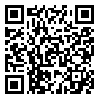1. Yong M, Panth N, McMahon CM, Thorne PR, Emmett SD. How the world's children hear: a narrative review of school hearing screening programs globally. OTO Open. 2020;4(2):2473974X20923580. [
DOI]
2. World Health Organization. Addressing the rising prevalence of hearing loss [Internet]. 2018. [
Article]
3. Paul PV, Whitelaw GM. Hearing and deafness: an introduction for health and education professionals. Jones & Bartlett Learning: Illustrated edition; 2011.
4. Yoshinaga-Itano C, Sedey AL, Coulter DK, Mehl AL. Language of early- and later-identified children with hearing loss. Pediatrics. 1998;102(5):1161-71. [
DOI]
5. Jarollahi F, Alinejad Kashani A, Keyhani M, Kamalvand A. The effects of auditory training by erber method on improvement of the auditory skills in 3-4 year-old hearing-impaired children. Function and Disability Journal. 2018;1(3):36–44. [
DOI]
6. Downs MP, Northern JL. Hearing in children. USA: Williams and Wilkins; 2014.
7. Kinboon N, Suwannoi P, Koul R. Thai secondary school of representation about ICT understanding in proposed learning model. Procedia Soc Behav Sci. 2014;143:799–803. [
DOI]
8. Henshaw H, Ferguson MA. Efficacy of individual computer-based auditory training for people with hearing loss: a systematic review of the evidence. Plos One. 2013;8(5):e62836. [
DOI]
9. Abbasiannik Z, Hassanzadeh S, Farhadi M, Afrooz G. Investigating the effectiveness of navayesh family-based multimedia virtual aural rehabilitation program on the audio-lingual perception performance rate of deaf children with cochlear implant. Research in School and Virtual Learning. 2019;7(2):55–64. [Persian] [
Article]
10. Nanjundaswamy M, Prabhu P, Rajanna RK, Ningegowda RG, Firdose H, Sharma M. Benefits of computerized auditory training software for Kannada speaking children with hearing impairment – parent's perspective. Hearing, Balance and Communication. 2017;15(4):227–34. [
DOI]
11. Jie Fu. Angel Sound: Interactive listening rehabilitation and functional hearing test program. Emily Shannon; 2017.
12. Stacey PC, Quentin Summerfield A. Effectiveness of computer-based auditory training in improving the perception of noise-vocoded speech. J Acoust Soc Am. 2007;121(5):2923–35. [
DOI]
13. Hassanzadeh S, Nikkhoo F. The efficacy of Navayesh parent- based aural habilitation on communication abilities of deaf infants who are in cochlear implantation waiting list: an experience of early intervention on infants with deafness. Journal of Applied Psychological Research. 2016;7(3):1–18. [Persian] [
Article]
14. Delavar A. Educational and psychological research. Tehran: Virayesh Pub; 2015. [Persian]
15. Coninx F, Weichbold V, Tsiakpini L, Autrique E, Bescond G, Tamas L, et al. Validation of the LittlEARS® Auditory Questionnaire in children with normal hearing. Int J Pediatr Otorhinolaryngol. 2009;73(12):1761–8. [
DOI]
16. Zarifian T, Movallali G, Fotuhi M, Harouni GG. Validation of the Persian version of the LittlEARS® Auditory Questionnaire for assessment of auditory development in children with normal hearing. Int J Pediatr Otorhinolaryngol. 2019;123:79–83. [
DOI]
17. Hearnig Loss Association of America. Auditory training programs [Internet]. 2021.
18. Sharifi M, Fathabadi J, Shokri O, Pakdaman S. The experience of e-learning in the educational system of Iran: meta-analysis of the effectiveness of e-learning in comparison to face-to-face education. Research in School and Virtual Learning. 2019;7(1):9–24. [Persian] [
Article]
19. Mosavi Kiasari N, Bayani AA, Rasti M. The impact of language multimedia software on training language and speech to children with hearing impairment. J Except Educ. 2015;6(134):15–21. [Persian] [
DOI]
20. Bazrafshan S, Alikhani M, Rastegar Pour H. The effect of e-learning content (multimedia training) on learning science on deaf students' girl in sixth grade. J Except Educ. 2014;3(125):17–21. [Persian] [
DOI]
21. Yaraei Shahmirzadi D, Etemadi T, Hosseini SM. Comparing the effect of multi-media software with traditional methods on teaching language and speech in hearing-impaired children. Information and Communication Technology in Educational Sciences. 2013;3(4):23–40. [Persian] [
Article]
22. Jerger J. Aural rehabilitation and the internet. J Am Acad Audiol. 2011;22(5):252–252. [
DOI]
23. Yanbay E, Hickson L, Scarinci N, Constantinescu G, Dettman SJ. Language outcomes for children with cochlear implants enrolled in different communication programs. Cochlear Implants Int. 2014;15(3):121–35. [
DOI]
24. Barimani S, Asadi J, Khajevand A. The effectiveness of game therapy on deaf children's social adaptation and communication skills. Journal of Rehabilitation. 2018;19(3):250–61. [Persian] [
DOI]
25. White S, Milne E, Rosen S, Hansen P, Swettenham J, Frith U, et al. The role of sensorimotor impairments in dyslexia: a multiple case study of dyslexic children. Dev Sci. 2006;9(3):237–55. [
DOI]
26. Hatzigiannakoglou P, Okalidou A. Development of a rehabilitation reinforcement tool for cochlear implanted children through a mobile-based VR and AR serious game. In: iCARE conference [Internet]. Leuven, Belgium; 2017.
27. Moore D, Amitay S. Auditory training: rules and applications. Semin Hear. 2007;28(2):099–109. [
DOI]


 ، گیتا موللی*2
، گیتا موللی*2 

 ، سمیرا وکیلی3
، سمیرا وکیلی3 





